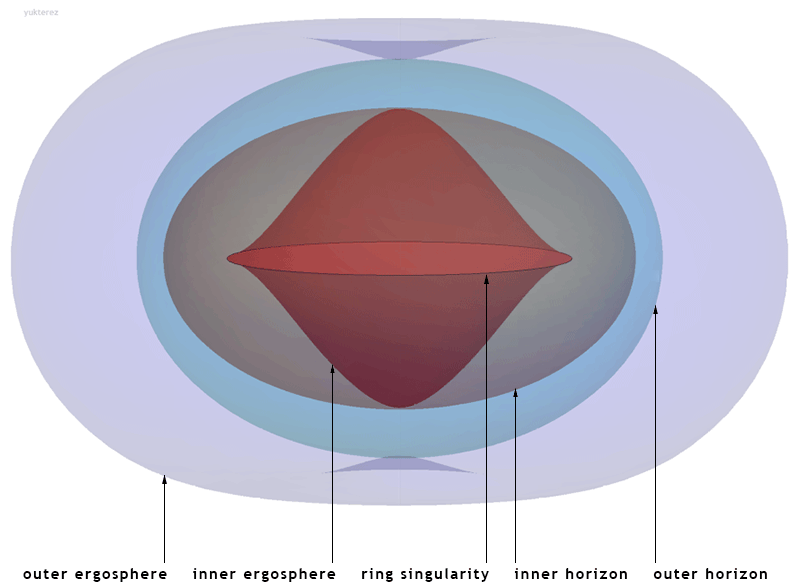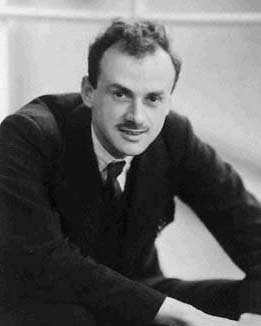|
Superradiance
In physics, superradiance is the radiation enhancement effects in several contexts including quantum mechanics, astrophysics and relativity. Quantum optics In quantum optics, superradiance is a phenomenon that occurs when a group of ''N'' emitters, such as excited atoms, interact with a common light field. If the wavelength of the light is much greater than the separation of the emitters, then the emitters interact with the light in a collective and coherent fashion. This causes the group to emit light as a high intensity pulse (with rate proportional to ''N''2). This is a surprising result, drastically different from the expected exponential decay (with rate proportional to ''N'') of a group of independent atoms (see spontaneous emission). Superradiance has since been demonstrated in a wide variety of physical and chemical systems, such as quantum dot arrays and J-aggregates. This effect has been used to produce a superradiant laser. Rotational superradiance Rotational su ... [...More Info...] [...Related Items...] OR: [Wikipedia] [Google] [Baidu] |
Black Hole Bomb
A black hole bomb is the name given to a physical effect utilizing how a bosonic field impinging on a rotating black hole can be amplified through superradiant scattering. If the amplified field is reflected back towards the black hole, the amplification can be repeated, leading to a run-away growth of the field, i.e. an explosion. One way this reflection could be realized in nature is if the bosonic field has mass. The mass of the field can then cause the amplified modes to be trapped around the black hole, leading to an endless cycle of self-amplification. The mechanism by which the black hole bomb functions is called superradiant instability. It can also refer to one such method of creating such a runaway effect, a Penrose sphere with no means for energy to passively escape. History The idea that angular momentum and energy may be transferred from a rotating black hole to a particle being scattered by it was proposed by Roger Penrose in 1971. The first discussion of a runaway e ... [...More Info...] [...Related Items...] OR: [Wikipedia] [Google] [Baidu] |
Superradiant Laser
A superradiant laser is a laser that does not rely on a large population of photons within the laser cavity to maintain coherence. Rather than relying on photons to store phase coherence, it relies on collective effects in an atomic medium to store coherence. Such a laser uses repumped Dicke superradiance (or superfluorescence) to sustain emission of light that can have a substantially narrower linewidth than a conventional laser. See also * Dicke model * Superradiant phase transition In quantum optics, a superradiant phase transition is a phase transition that occurs in a collection of fluorescent emitters (such as atoms), between a state containing few electromagnetic excitations (as in the electromagnetic vacuum) and a su ... References Laser types {{optics-stub ... [...More Info...] [...Related Items...] OR: [Wikipedia] [Google] [Baidu] |
Physics
Physics is the natural science that studies matter, its fundamental constituents, its motion and behavior through space and time, and the related entities of energy and force. "Physical science is that department of knowledge which relates to the order of nature, or, in other words, to the regular succession of events." Physics is one of the most fundamental scientific disciplines, with its main goal being to understand how the universe behaves. "Physics is one of the most fundamental of the sciences. Scientists of all disciplines use the ideas of physics, including chemists who study the structure of molecules, paleontologists who try to reconstruct how dinosaurs walked, and climatologists who study how human activities affect the atmosphere and oceans. Physics is also the foundation of all engineering and technology. No engineer could design a flat-screen TV, an interplanetary spacecraft, or even a better mousetrap without first understanding the basic laws of physics ... [...More Info...] [...Related Items...] OR: [Wikipedia] [Google] [Baidu] |
Friction
Friction is the force resisting the relative motion of solid surfaces, fluid layers, and material elements sliding (motion), sliding against each other. There are several types of friction: *Dry friction is a force that opposes the relative lateral motion of two solid surfaces in contact. Dry friction is subdivided into ''static friction'' ("stiction") between non-moving surfaces, and ''kinetic friction'' between moving surfaces. With the exception of atomic or molecular friction, dry friction generally arises from the interaction of surface features, known as Asperity (materials science), asperities (see Figure 1). *Fluid friction describes the friction between layers of a viscous fluid that are moving relative to each other. *Lubricated friction is a case of fluid friction where a lubricant fluid separates two solid surfaces. *Skin friction is a component of Drag (physics), drag, the force resisting the motion of a fluid across the surface of a body. *Internal friction is t ... [...More Info...] [...Related Items...] OR: [Wikipedia] [Google] [Baidu] |
Virtual Particle
A virtual particle is a theoretical transient particle that exhibits some of the characteristics of an ordinary particle, while having its existence limited by the uncertainty principle. The concept of virtual particles arises in the perturbation theory of quantum field theory where interactions between ordinary particles are described in terms of exchanges of virtual particles. A process involving virtual particles can be described by a schematic representation known as a Feynman diagram, in which virtual particles are represented by internal lines. Virtual particles do not necessarily carry the same mass as the corresponding real particle, although they always conserve energy and momentum. The closer its characteristics come to those of ordinary particles, the longer the virtual particle exists. They are important in the physics of many processes, including particle scattering and Casimir forces. In quantum field theory, forces—such as the electromagnetic repulsion ... [...More Info...] [...Related Items...] OR: [Wikipedia] [Google] [Baidu] |
Event Horizon
In astrophysics, an event horizon is a boundary beyond which events cannot affect an observer. Wolfgang Rindler coined the term in the 1950s. In 1784, John Michell proposed that gravity can be strong enough in the vicinity of massive compact objects that even light cannot escape. At that time, the Newtonian theory of gravitation and the so-called corpuscular theory of light were dominant. In these theories, if the escape velocity of the gravitational influence of a massive object exceeds the speed of light, then light originating inside or from it can escape temporarily but will return. In 1958, David Finkelstein used general relativity to introduce a stricter definition of a local black hole event horizon as a boundary beyond which events of any kind cannot affect an outside observer, leading to information and firewall paradoxes, encouraging the re-examination of the concept of local event horizons and the notion of black holes. Several theories were subsequently developed, ... [...More Info...] [...Related Items...] OR: [Wikipedia] [Google] [Baidu] |
Analogous
Analogy (from Greek ''analogia'', "proportion", from ''ana-'' "upon, according to" lso "against", "anew"+ ''logos'' "ratio" lso "word, speech, reckoning" is a cognitive process of transferring information or meaning from a particular subject (the analog, or source) to another (the target), or a linguistic expression corresponding to such a process. In a narrower sense, analogy is an inference or an argument from one particular to another particular, as opposed to deduction, induction, and abduction, in which at least one of the premises, or the conclusion, is general rather than particular in nature. The term analogy can also refer to the relation between the source and the target themselves, which is often (though not always) a similarity, as in the biological notion of analogy. Analogy plays a significant role in problem solving, as well as decision making, argumentation, perception, generalization, memory, creativity, invention, prediction, emotion, explanation, conceptual ... [...More Info...] [...Related Items...] OR: [Wikipedia] [Google] [Baidu] |
Kerr Black Hole
The Kerr metric or Kerr geometry describes the geometry of empty spacetime around a rotating uncharged axially symmetric black hole with a quasispherical event horizon. The Kerr metric is an exact solution of the Einstein field equations of general relativity; these equations are highly non-linear, which makes exact solutions very difficult to find. Overview The Kerr metric is a generalization to a rotating body of the Schwarzschild metric, discovered by Karl Schwarzschild in 1915, which described the geometry of spacetime around an uncharged, spherically symmetric, and non-rotating body. The corresponding solution for a ''charged'', spherical, non-rotating body, the Reissner–Nordström metric, was discovered soon afterwards (1916–1918). However, the exact solution for an uncharged, ''rotating'' black hole, the Kerr metric, remained unsolved until 1963, when it was discovered by Roy Kerr.Melia, Fulvio (2009). "Cracking the Einstein code: relativity and the birth of b ... [...More Info...] [...Related Items...] OR: [Wikipedia] [Google] [Baidu] |
Tangent
In geometry, the tangent line (or simply tangent) to a plane curve at a given point is the straight line that "just touches" the curve at that point. Leibniz defined it as the line through a pair of infinitely close points on the curve. More precisely, a straight line is said to be a tangent of a curve at a point if the line passes through the point on the curve and has slope , where ''f'' is the derivative of ''f''. A similar definition applies to space curves and curves in ''n''-dimensional Euclidean space. As it passes through the point where the tangent line and the curve meet, called the point of tangency, the tangent line is "going in the same direction" as the curve, and is thus the best straight-line approximation to the curve at that point. The tangent line to a point on a differentiable curve can also be thought of as a ''tangent line approximation'', the graph of the affine function that best approximates the original function at the given point. Similarly ... [...More Info...] [...Related Items...] OR: [Wikipedia] [Google] [Baidu] |
Electromagnetic Radiation
In physics, electromagnetic radiation (EMR) consists of waves of the electromagnetic (EM) field, which propagate through space and carry momentum and electromagnetic radiant energy. It includes radio waves, microwaves, infrared, (visible) light, ultraviolet, X-rays, and gamma rays. All of these waves form part of the electromagnetic spectrum. Classically, electromagnetic radiation consists of electromagnetic waves, which are synchronized oscillations of electric and magnetic fields. Depending on the frequency of oscillation, different wavelengths of electromagnetic spectrum are produced. In a vacuum, electromagnetic waves travel at the speed of light, commonly denoted ''c''. In homogeneous, isotropic media, the oscillations of the two fields are perpendicular to each other and perpendicular to the direction of energy and wave propagation, forming a transverse wave. The position of an electromagnetic wave within the electromagnetic spectrum can be characterized ... [...More Info...] [...Related Items...] OR: [Wikipedia] [Google] [Baidu] |
Quantum Electrodynamics
In particle physics, quantum electrodynamics (QED) is the relativistic quantum field theory of electrodynamics. In essence, it describes how light and matter interact and is the first theory where full agreement between quantum mechanics and special relativity is achieved. QED mathematically describes all phenomena involving electrically charged particles interacting by means of exchange of photons and represents the quantum counterpart of classical electromagnetism giving a complete account of matter and light interaction. In technical terms, QED can be described as a perturbation theory of the electromagnetic quantum vacuum. Richard Feynman called it "the jewel of physics" for its extremely accurate predictions of quantities like the anomalous magnetic moment of the electron and the Lamb shift of the energy levels of hydrogen. History The first formulation of a quantum theory describing radiation and matter interaction is attributed to British scientist Paul Dirac, wh ... [...More Info...] [...Related Items...] OR: [Wikipedia] [Google] [Baidu] |


